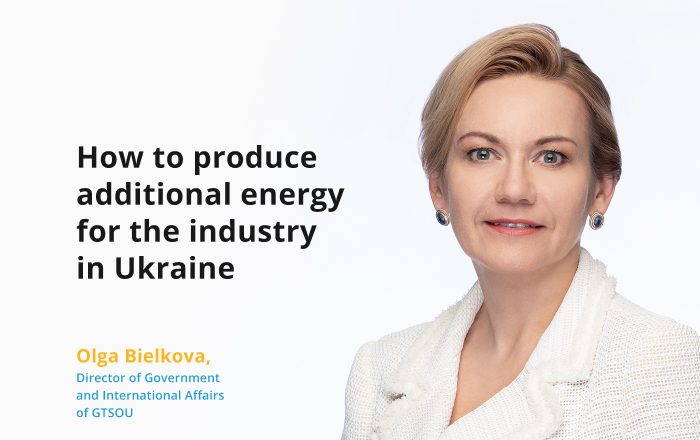Between an idea and a finished project, there is always time, discussions, assessment of opportunities and risks, costs, current situation, feasibility study, etc. It is exactly what happened with the idea of introducing gas-fired power generation.
The demand for gas-fired generation is pressing, but theoretically, it will be in need in the future to balance renewable energy sources (RES).
First of all, the projects are relevant for cities and large industries facing the task of optimizing their dependence on the energy system, where the total capacity deficit is at least 2 GW. Currently, the deficit in the energy system is mainly resolved by diesel and petrol generators or through blackouts, but this does not solve the problem in the long run. Temporary measures mustn’t replace strategic and long-term solutions. Quick solutions give a particular “head start” for developing alternatives that require more time to install and attract funding.
Today, all circumstances and expert opinions converge on the prospect of reducing the deficit in the energy system of Ukraine by using distributed gas-fired generation. But opinions partly diverge on how to do it right.
Now is the time to move on from discussions to addressing practical issues and unlocking industry development by creating opportunities for various pilot projects. It can happen in two key ways:
1. Creation of backup generation based on state-owned or municipal enterprises under the control of the Cabinet of Ministers and in coordination with Ukrenergo’s dispatching. Most likely, this electricity will be sold at a regulated price and on special conditions to meet the country’s social and security needs.
2. As an investment area for the business sector to generate electricity for private facilities and industry sectors that value the stability of electricity supply more than its price and government subsidies.
Instead of focusing on one standard operation model, both directions should be developed simultaneously. There is merit in attracting foreign and private investors, who will take the burden off the donors and organize the optimal operation of gas generation within the country. Meanwhile, state-owned companies could focus more on the segment of socially vulnerable consumers and those with security needs.
Different regulatory incentives are required for these two directions of electricity generation development: for state-owned companies – the possibility of preferential capital investments and compensations to cover the costs of new operations, while for private investors, it is more important to obtain permission to sell electricity without price caps and under the conditions of uninterrupted power supply to industrial consumers. We should stimulate all additional electricity generation that meets the requirements of distributed generation, is close to the consumer, and can be helpful to the community where it is located. And also, generation has strong performance indicators and contributes to the optimization of emissions.
Currently, the industrial sector can import more expensive imported electricity for its own needs, with a guarantee of protection against planned power cuts. Why not start generating for yourself instead? Gas-fired electric power generation in Ukraine is not an insufficient resource for the Ukrainian industry, in particular for the metallurgical industry, especially considering the physical restriction on imports. The right conditions for these investments can create a significant economic multiplier effect. The absence of electricity is more harmful than a conventional premium price for the industry.
After the war, medium- and large-capacity gas-fired generation can either serve as a basis for many regions that will experience a shortage of electricity due to the destruction of thermal generation or serve as balancing power for green energy, which will undoubtedly become more and more abundant. This type of generation was “exotic” for Ukraine before the full-scale invasion, but it may well help us all survive the difficult times of war and make the transition to a fully green generation in the next 10-15 years smoother.
